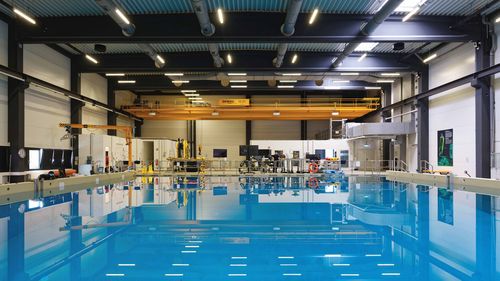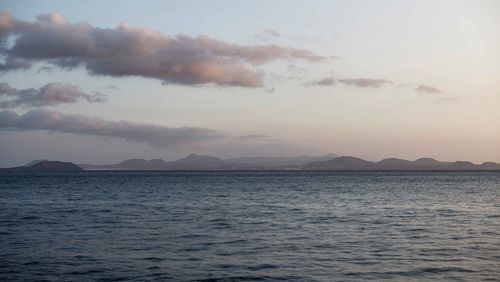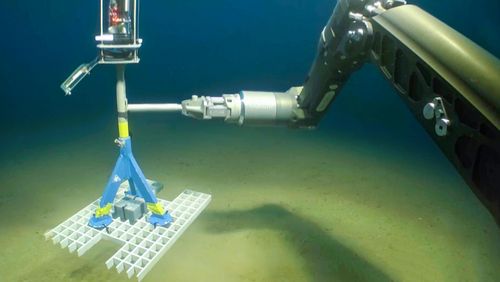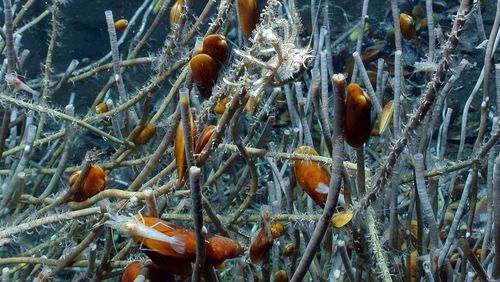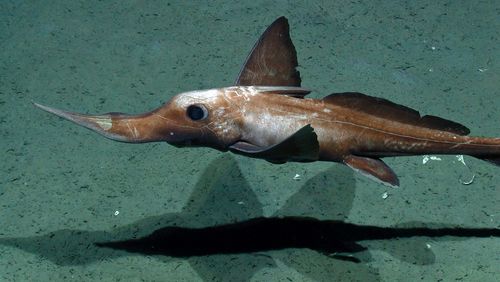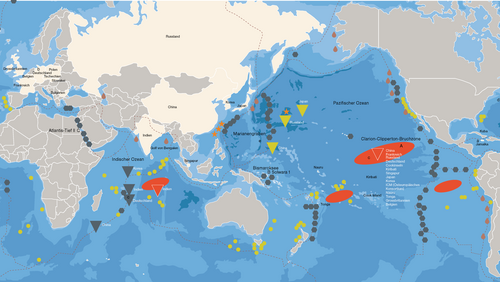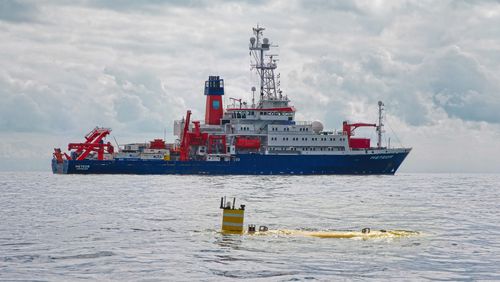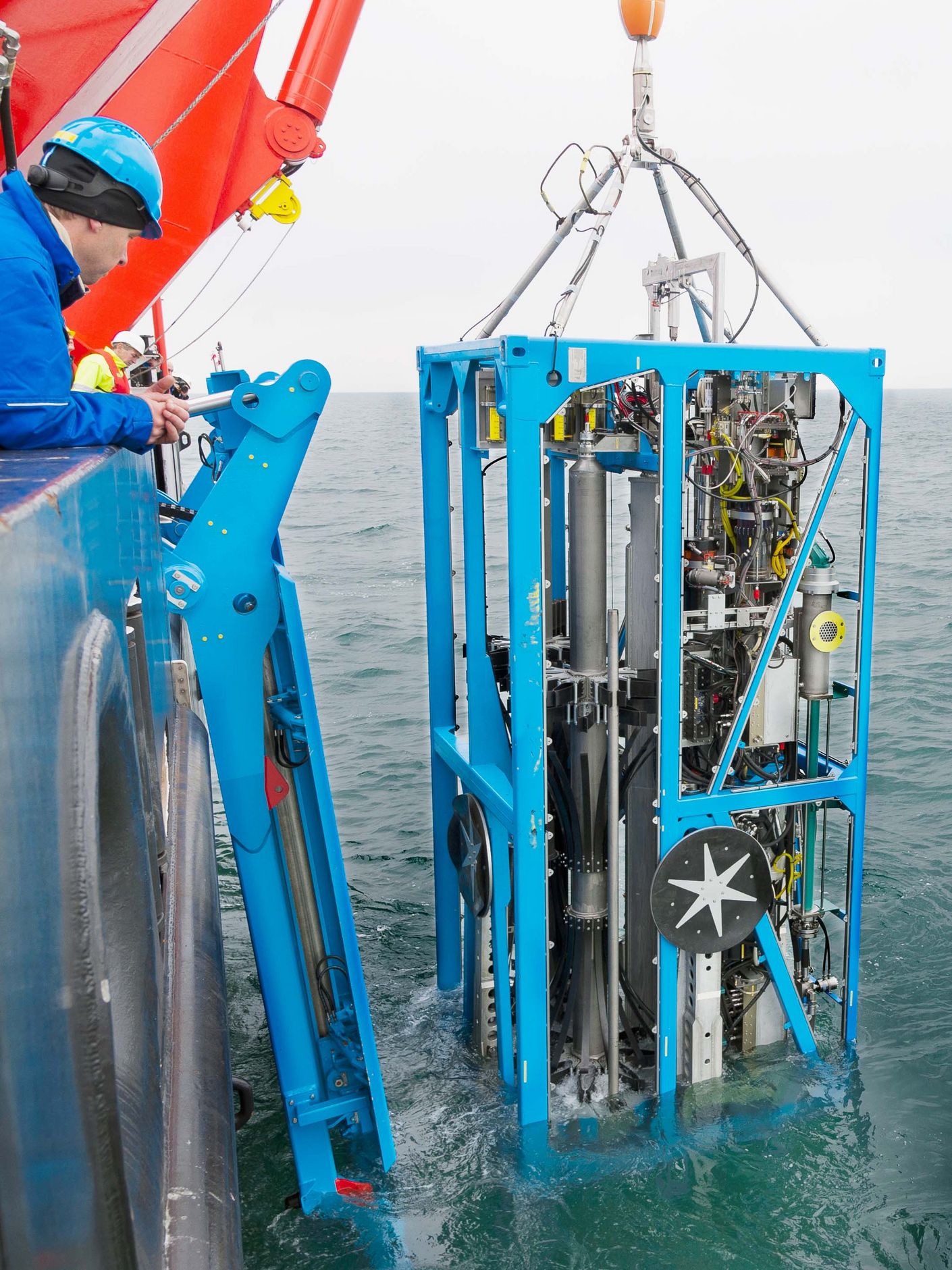
In the photograph: a tried-and-trusted MARUM drill that can probe the sea-bed
Treading softly in the deep sea
How can we protect the vulnerable ecosystems of the deep sea once it has become the site of disruptive mining operations? A daunting task. But the Innovation Center for Deep-Sea Environmental Monitoring at MARUM in Bremen is up to the challenge— thanks to a 10-year grant (as of 2018) from the Werner Siemens Foundation.
The unique ecosystems of the abyssal ocean are in danger. The seabed harbours large deposits of valuable resources such as gold, silver, copper and rare earth elements, and numerous countries and businesses are eager to lay their hands on these treasures. The first company to announce plans to mine the deep sea was Nautilus Minerals Inc. But the operations, scheduled to begin in 2019 in the Bismarck Sea off the coast of Papua New Guinea, have been delayed—a stroke of good fortune for the deep sea.
Getting to know the territory
The delay is also good news for the Innovation Center for Deep-Sea Environmental Monitoring, as it gives the team additional time to develop the technology needed to monitor the environment of the deep sea. Currently, no environmental protection organisation is in the position to monitor large swaths of the deep sea, let alone protect it. After all, 90 per cent of the abyssal sea is a true terra incognita, and the researchers must first understand what exactly there is to be protected. What they do know: at a depth of 200 to 1 100 metres, life forms regenerate only at an extremely slow pace, if at all, meaning that deep-sea mining would have grave consequences for the ocean’s ecosystems.
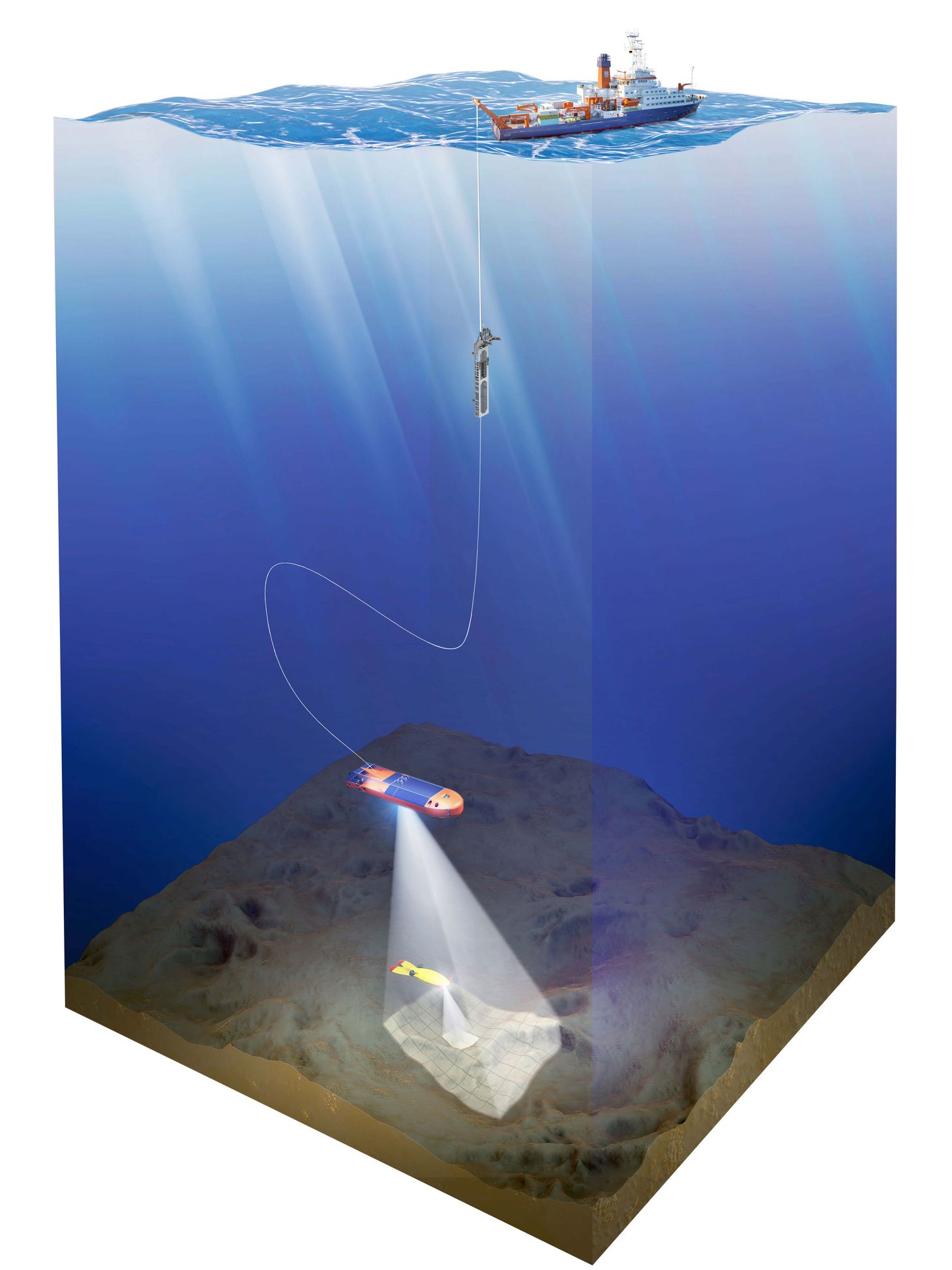
Map with care
For Werner Siemens Endowed Chair Ralf Bachmayer and his team, the first step towards developing a protection strategy for the deep sea is finding a way to create precise maps of the subaquatic terrain. Like most research in the abyssal sea, this is easier said than done, because virtually all aspects of charting the seabed pose major challenges: how to transmit data, how to power the various instruments in the depths and, last but not least, how to guide a camera over a seabed that is highly sensitive to water turbulence. The loose seabed layer below the water column is only partially made of stone; instead, much like moorland, it consists mainly of unstable, floating particles that even the slightest of motions can disturb—and which could lead to serious disruptions in the deep-sea ecosystem.
Better in tandem
To accommodate the hyper-sensitivity of the ocean floor, Ralf Bachmayer and his team have developed a strategy with two underwater vehicles that operate in tandem. From a safe distance, a “mother submarine” (for instance the H-ROV, a hybrid underwater vehicle that operates autonomously or via remote control) shines a light on a large swath of the seabed and takes low-resolution photos of the general area. At the same time, the mother submarine steers a small, agile vehicle moving close to the seabed. This device makes high-resolution images and sends them to the mother submarine. The vehicle hovering above theocean floor is a minimally invasive autonomous underwater vehicle, or AUV. Minimally invasive means that the vehicle is able to inch gently over the seabed, thus preventing it from disturbing the soft upper seabed layer and clouding the waters. Autonomous means that, although the researchers can define where and how close to the seabed the AUV should chart a map, the vehicle nevertheless retains the ability to react independently should it suddenly encounter rocky crags or seamounts in the dark. Because the vehicle is partially intelligent, it can spontaneously decide how it should avoid obstacles, even though the mother submarine is monitoring all its movements.
Data transmission
The current plan is for the AUV to use an innovative optic modem to transmit the high-resolution images of the seabed via the mother submarine up to the research team. The modem was successfully tested in the Mediterranean, off the coast of Nice, in September of 2019. This is good news, as an optic modem is more efficient and can transmit a greater mass of data than the acoustic technologies generally used for underwater data transmission. Two additional tests covering larger swaths of territory and in deeper waters are planned for 2020. With these achievements, Ralf Bachmayer and his team have taken considerable strides in their endeavour to safeguard the deep sea.
Text: Brigitt Blöchlinger
Simulation: Innovation Center for Deep-Sea Environmental Monitoring
